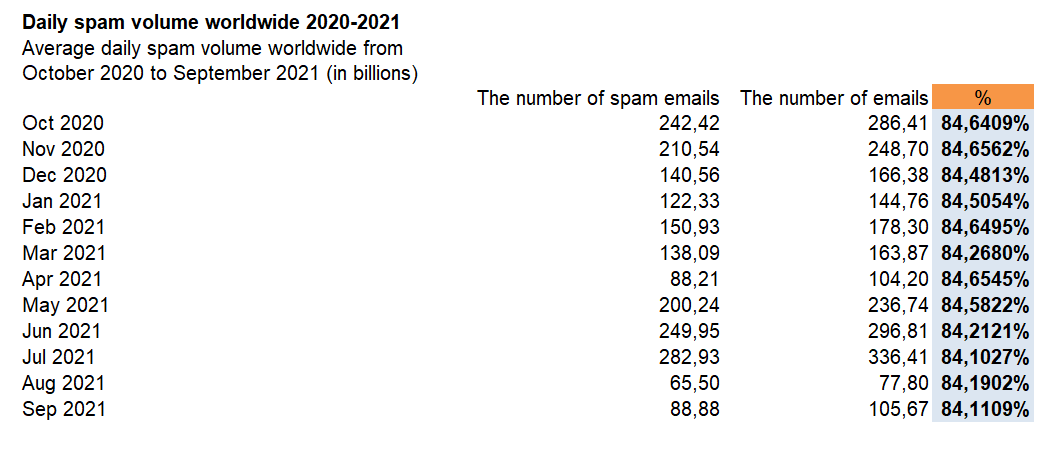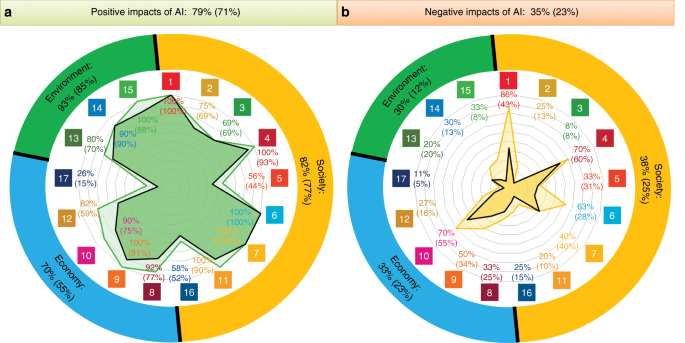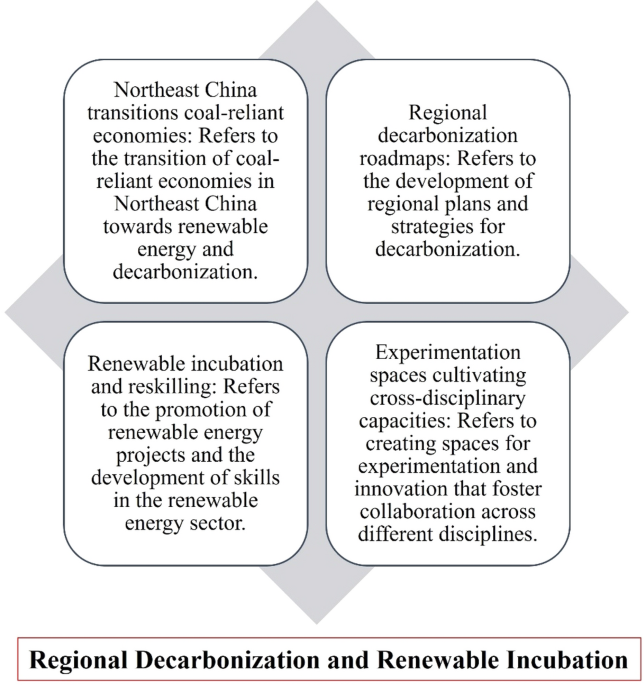- TechDBS
- Posts
- Email Spam And Unused Data Are Polluting The World
Email Spam And Unused Data Are Polluting The World
A reflection on digital waste and the collective action needed for resource optimization.

Think about how many emails you received during the last month. Now, consider how many of those emails were actually spam.
Spam messages made up over 45 percent of email traffic in December 2022. This means that 4 out of every 10 emails are useless, they're spam, and it would be better if they didn't exist.

Source: Statista
Another statistic is even more alarming. The graph below shows the average daily spam volume worldwide from October 2020 to September 2021.

Source: Statista
The two sets of data appear to conflict with each other. While the first set shows that 45% of emails are spam, the second chart presents a more complex situation, showing an average spam email percentage much higher than the first, at 84% according to my analysis. This means that, in this historical period, out of every 10 emails sent worldwide, 8 is spam (this is the optimistic view).

Personal elaboration from Statista data
I'm not interested in comparing these datasets, although it would be useful to have an exact figure, which is difficult because of the many variables that influence email spam. What catches my attention in these analyses is the significantly high spam rate in relation to the total email count.
It is impossible to ignore spam. I checked an old email account of mine that I no longer use and found that the amount of useless emails there somewhat matches the statistics mentioned above. I encourage you to check it out for yourselves. Just log into your oldest account.
Spam doesn't just annoy by filling our inbox with unwanted emails; it also poses a significant environmental problem. The same holds true for the thousands of documents that every individual and organization store every day. Even the emails that are actually needed (the non-spam emails) are often read just once and then never opened again. The production and management of this extensive pool of unused digital data have a substantial effect on the environment.

The massive storage of data, such as unread emails and unused documents, results in pollution. The actual issue is not so much the use of technology itself. It is widely acknowledged that activities such as emailing or searching online have environmental consequences even if they are “free”. The same is true for cloud data storing. But, a significant portion of this cost is avoidable.
I often talk with companies obsessed with the concept of backup. Their priority seems to be to gather as much digital data as possible and then store it indefinitely. These companies do not seem to realize that this attitude carries two major risks that can become more dangerous than they seem. Embracing this mindset not only exacerbates digital pollution but also exposes them to risks concerning data security and management.
One is the security risk associated with keeping data for an indefinite period. Legally, there are time limits after which certain data become obsolete and are no longer needed. There is no longer any reason to keep them: no authority will request them, and they will be too outdated to be used in meaningful analysis. So, why take on the risk of holding onto these data if they are, in fact, useless?
The second risk is an environmental issue. Why continue to keep unnecessary data, constantly generating a need for more digital storage? Digital storage isn’t free. Increasing storage requirements means adding more servers, which use more power, generate more heat, and cause more pollution (and cost them a lot of money).
Technical solutions that allow for the calculation of the environmental impact of services, including cloud services, are becoming increasingly accessible. This means organizations now have the tools to measure and understand the impact their digital services have on the environment, enabling them to take steps to reduce this impact and better allocate resources.
Technological progress should not be halted, but wasting resources makes no sense and is pointless. This is especially true in the era of artificial intelligence (AI), which requires substantial energy for its development and use.
From Nature (2020):
AI seems destined to play a dual role. On the one hand, it can help reduce the effects of the climate crisis, such as in smart grid design, developing low-emission infrastructure, and modelling climate change predictions. On the other hand, AI is itself a significant emitter of carbon. This message reached the attention of a general audience in the latter half of 2019 when researchers at the University of Massachusetts Amherst analysed various natural language processing (NLP) training models available online to estimate the energy cost in kilowatts required to train them. Converting this energy consumption in approximate carbon emissions and electricity costs, the authors estimated that the carbon footprint of training a single big language model is equal to around 300,000 kg of carbon dioxide emissions. This is of the order of 125 round-trip flights between New York and Beijing, a quantification that laypersons can visualize.
AI has a significant advantage: although it consumes energy, it can help to improve the environmental situation by dramatically optimizing resource use and reducing waste. One could consider it a sort of investment and, as with any investments, it should also be optimized.
In summary, there's nothing worse than wasting resources.
For individuals, their impact can be beneficial but not decisive unless it involves many people. However, considering the collective impact of large organizations, the use of resources can truly be optimized and digital waste avoided.





Reply